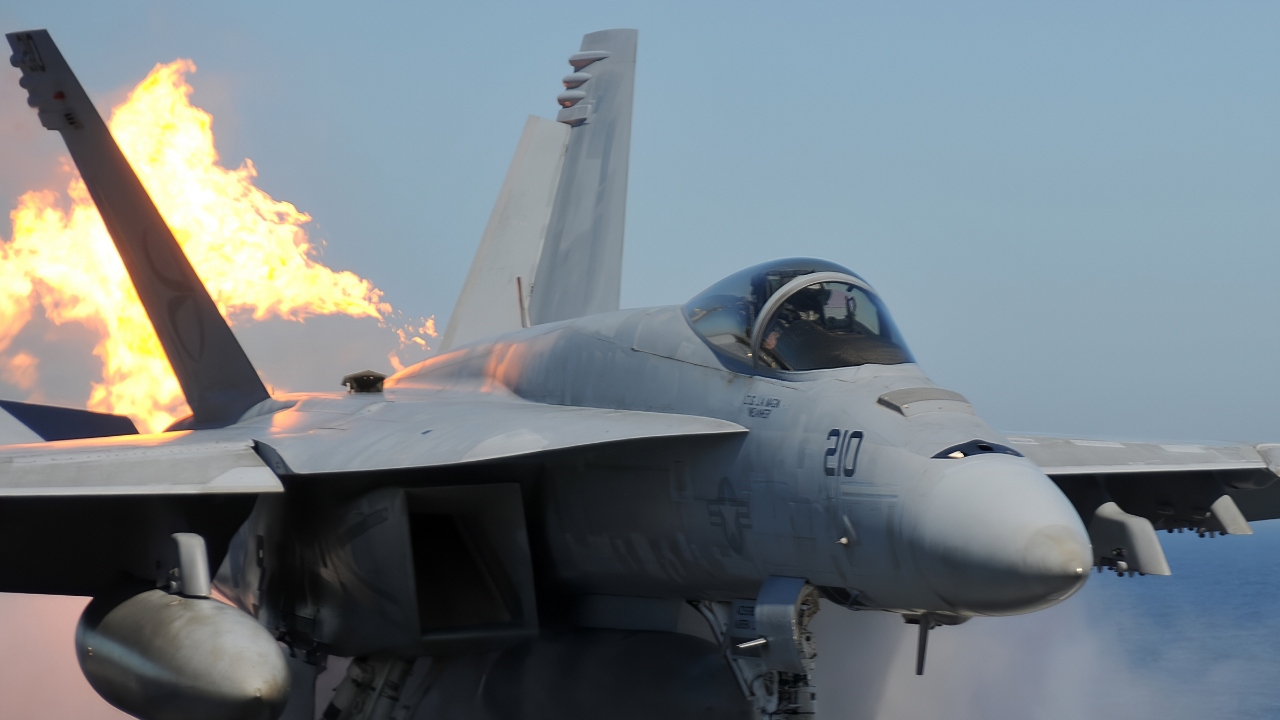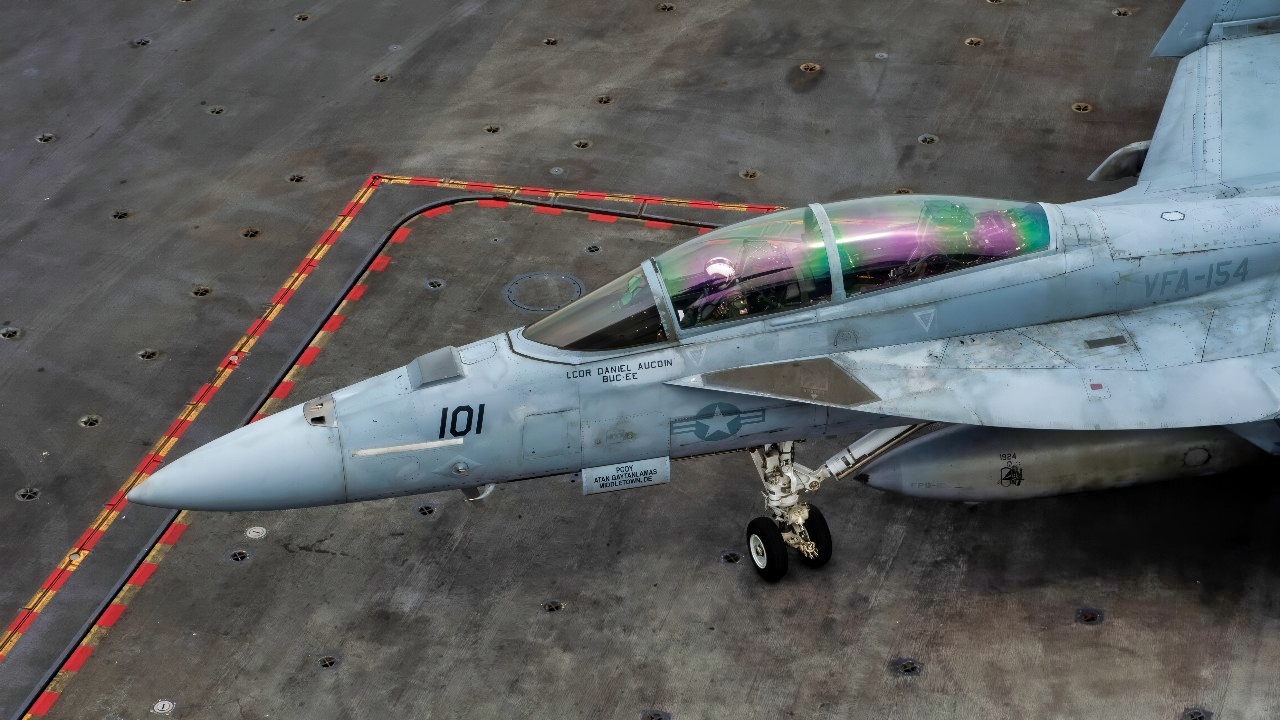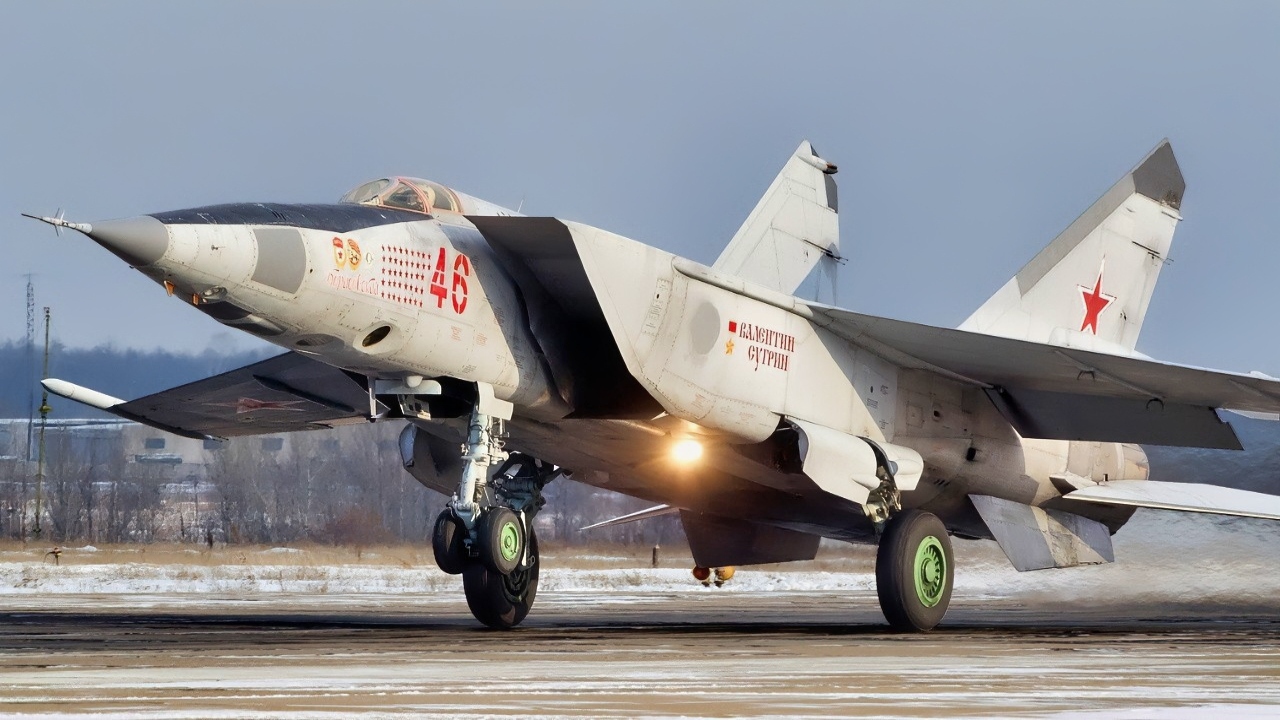Key Points and Summary – Desert Storm began with overwhelming coalition airpower—but not without loss. Guided by ground controllers, Iraqi pilot Zuhair Dawoud in a MiG-25 climbed to meet a U.S. Navy strike, maneuvered behind the formation, and, once his radar was live, launched an R-40RD that downed Lt. Cmdr. Scott Speicher’s F/A-18C.
-AWACS ID constraints and ROE delayed a U.S. shot; the Foxbat’s speed, altitude, and big missiles did the rest.

A U.S. Navy F/A-18E Super Hornet aircraft assigned to Strike Fighter Squadron 137 is launched from the flight deck of the aircraft carrier USS Abraham Lincoln (CVN 72) while underway in the Pacific Ocean on Feb.2, 2009. (DoD photo by Petty Officer 2nd Class James R. Evans, U.S. Navy. (Released)

(July 24, 2025) – A U.S. Navy F/A-18F Super Hornet, assigned to the “Black Knights” of Strike Fighter Squadron (VFA) 154, transits the flight deck of Nimitz-class aircraft carrier USS Theodore Roosevelt (CVN 71), July 24, 2025. Theodore Roosevelt, flagship of Carrier Strike Group (CSG) 9, is underway conducting exercises to bolster strike group readiness and capability in the U.S. 3rd Fleet area of operations. (U.S. Navy photo by Mass Communication Specialist Seaman Maddix Almeyda)
-Long misattributed to SAMs, the kill was later confirmed by recovered data and, in 2009, Speicher’s remains. Tactically, it’s a cautionary tale: even legacy interceptors can exploit gaps in complex, high-tempo strike packages.
The MiG-25 Foxbat Can Fight
On the night of January 17, 1991, Operation Desert Storm began with a U.S.-led coalition air campaign into Iraqi airspace.
Desert Storm and the Gulf War in general are widely regarded as one of the most successful and efficient military campaigns in U.S. history.
Within a matter of days, the U.S. Army and its coalition had managed to decimate the Iraqi Army, which was considered one of the best in the World at the time. However, the Iraqi’s did not go down without a fight.
On the first night of Desert Storm, an Iraqi MiG-25 Foxbat managed to successfully down an American F/A-18C Hornet.
The First Night of Desert Storm
The mission that night was part of a larger alpha strike targeting Tammuz Air Base, a key Iraqi military installation. Ten F/A-18C Hornets from VFA-81 “Sunliners” and VFA-83 “Rampagers,” launched from the USS Saratoga, were tasked with sweeping the skies ahead of the bombers and suppressing enemy radar and missile sites using AGM-88 HARM missiles.
Flying in a wide proper echelon formation at altitudes between 25,000 and 29,000 feet, the Hornets were spaced two to five miles apart and stacked vertically to avoid mid-air collisions.
Behind them followed eight A-6E Intruders, whose mission was to bomb hardened aircraft shelters and MiG-29 assembly facilities.
Supporting the formation were EA-6B Prowlers for electronic warfare and F-14A Tomcats for escort, although the Tomcats were restricted from sweeping ahead due to limitations in electronic identification capabilities.

MiG-25 Foxbat. Image Credit: Creative Commons.

MiG-25. Image Credit: Creative Commons.
Despite the overwhelming technological and numerical superiority of the coalition forces, the Iraqi Air Force was not entirely defenseless. At Qadessiya Air Base, known to Western forces as Al Asad, Lt. Zuhair Dawoud, a pilot of the MiG-25PD Foxbat, was on standby alert.
At 2:38 a.m. Baghdad time, Dawoud received a call from the air defense command ordering an immediate takeoff.
Within minutes, he was airborne, climbing in full afterburner to 8,000 meters and accelerating to Mach 1.4. His radar was still warming up, so he relied on Ground Control Intercept vectors to guide him toward the incoming American formation.
The Hornet Meets the MiG-25 Foxbat
As Dawoud approached the formation, Commander Michael T. “Spock” Anderson, leading the Hornets in aircraft AA401, detected the MiG-25 on radar. Anderson visually identified the aircraft by its distinctive long yellow afterburner flame, a signature of the Foxbat.
He locked onto Dawoud’s aircraft but held fire, awaiting confirmation from AWACS (callsign “Cougar”). However, because Dawoud’s radar was not transmitting, AWACS could not confirm the target as hostile.
The two aircraft circled each other in the darkness, their afterburners illuminating the night sky. Eventually, Dawoud broke off and turned east, passing over Anderson’s wingman.
This maneuver placed him behind the formation, where Lt. Cmdr. Scott “Spike” Speicher, flying aircraft AA403, was positioned as the last jet in the echelon.
Speicher had just disengaged his autopilot and was accelerating to launch his HARM missile when Dawoud, now with his radar fully operational, locked onto him.
At a distance of 29 kilometers, Dawoud fired an R-40RD missile from under his right wing. The missile, equipped with a 154-pound high-explosive blast-fragmentation warhead, detonated beneath Speicher’s cockpit.
The explosion caused the Hornet to yaw violently to the right, generating 6G side-forces that tore off external fuel tanks and one of the HARM missiles.
Speicher managed to eject, but he did not survive.
His aircraft crashed 48 miles south of Qadessiya, marking the first U.S. combat loss of the Gulf War.
Aftermath
For years, the fate of Lt. Cmdr. Scott Speicher remained a mystery. Initially listed as Missing in Action, he was later reclassified as Killed in Action/Body Not Recovered.
The U.S. Navy believed a surface-to-air missile had shot him down, but eyewitness accounts and later intelligence pointed to an air-to-air kill by a MiG-25.
In 1995, the digital flight recorder from Speicher’s aircraft was recovered, confirming the missile strike. His remains were not found until 2009, when U.S. Marines discovered them buried in the Iraqi desert, reportedly by Bedouins who had seen his body after the shootdown.
The engagement between Dawoud’s MiG-25 and Speicher’s F/A-18 remains one of the few confirmed air-to-air kills of the Gulf War on the Iraqi side and a rare instance of a MiG-25 successfully engaging a modern Western fighter.
It also showed the vulnerability of Western equipment to supposedly “obsolete” platforms. Considering the rest of the campaign, this event was more of an exception.
Never Underestimate Your Enemy
The MiG-25 Foxbat, though often criticized for its lack of maneuverability and outdated avionics, proved its worth in this engagement. Its speed, altitude capability, and powerful radar allowed it to intercept a fast-moving strike package under challenging conditions. The R-40RD missile, designed for high-speed intercepts, demonstrated lethal effectiveness against a maneuvering target.
On the other hand, the F/A-18 Hornet, a multirole fighter known for its agility and advanced avionics, was caught in a vulnerable moment, focused on its mission, flying in formation, and awaiting confirmation before engaging.
The rules of engagement and reliance on AWACS for target identification may have delayed Anderson’s response, allowing Dawoud to exploit the gap.
About the Author: Isaac Seitz
Isaac Seitz, a Defense Columnist, graduated from Patrick Henry College’s Strategic Intelligence and National Security program. He has also studied Russian at Middlebury Language Schools and has worked as an intelligence Analyst in the private sector.
More Military
Ready, Aim, Fire! The 5 Best Battleships of All Time
The F-35 Stealth Fighter Still Haunts the U.S. Military
Does Russia Even Need a Powerhouse Navy?
The YF-118G Bird of Prey Stealth Fighter Haunts the U.S. Air Force










